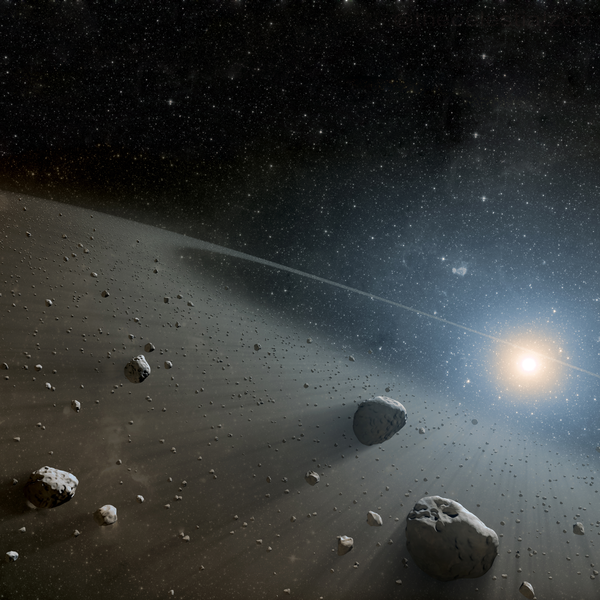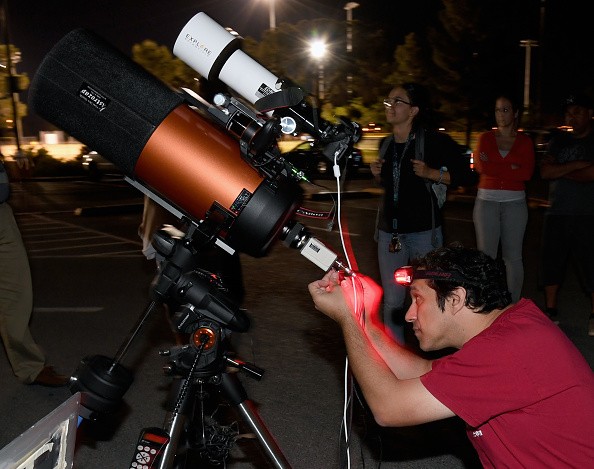Although an asteroid is unlikely to collide with Earth anytime soon, space authorities maintain a close check on them just in case.
Two physicists from the University of California, Santa Barbara, looked at ways to avoid the destruction produced if a 10-kilometer earthquake occurred. As in the Netflix original film Don't Look Up, an asteroid collides with the Earth.
Not all asteroids, though, would spell the end of humanity. To kill us all, the space rock would have to be enormous.
Because of the power of the impact and its knock-on effect on the ecosystem, if an asteroid of that magnitude impacted Earth now, everything would change quickly.
An asteroid impact might be an extinction-level catastrophe depending on the space rock's size, and experts have constructed models to assess how awful it could be.
Read also: DART: NASA's Defense System Against Asteroids Uses Clever Algorithm to Predict Incoming Threat
Damages

In their work, which is undergoing peer review, Prof. Philip Lubin and Alex Cohen of the University of California, Santa Barbara, show that technological advancements may give a cause to be optimistic about asteroid-induced catastrophe. They stated, "We show that mankind has exceeded a technical threshold to protect us from going the way of the dinosaurs." The work is complete. However, it has not yet been peer-reviewed.
The researchers wrote that a threat of this magnitude striking the Earth at a close speed of 40 km/s would have an impact energy of roughly 300 Teratons TNT, or about 40 thousand times larger than the current combined nuclear arsenal of the entire world, similar in energy to the KT extinction event that wiped out the dinosaurs some 66 million years ago.
"All of the ash from the fires and all of the finer-grain debris from the impact will linger out in the atmosphere for a long period, and we get what's termed an impact winter," Britt Scharringhausen, an associate professor of physics and astronomy at Beloit College, told Inverse.
Planetary Defense

The ways near-Earth objects (NEOs) on a probable collision track with Earth may be deflected away, averting disastrous impact occurrences, are referred to as asteroid impact avoidance. A sufficiently big asteroid or other NEO impact would result in catastrophic tsunamis or numerous firestorms, as well as an impact winter produced by the sunlight-blocking effect of large amounts of pulverized rock dust and other debris, pushed into the stratosphere, depending on the impact location.
Some researchers believe that the Earth is not yet prepared to protect itself against potentially devastating asteroids. However, NASA is investigating various defense options.
DART
The phrase "planetary defense" refers to all of the capabilities required to detect and warn of a prospective asteroid or comet impacts on Earth, as well as to either avoid or lessen their consequences.
It just launched a mission called the Double Asteroid Redirection Test.
The updated Asteroid Impact and Deflection Assessment AIDA mission has been authorized in mid-2021. In November 2021, NASA launched the Double Asteroid Redirection Test (DART) kinetic impactor spacecraft. Dimorphos (nicknamed Didymoon), the 180-meter (590-foot) minor-planet moon of near-Earth asteroid 65803 Didymos, is the target. Didymos will collide with Earth in October 2022, when it will close enough for Earth-based telescopes and planetary radar to see the event.
For more Space news, don't forget to follow Nature World News!
© 2025 NatureWorldNews.com All rights reserved. Do not reproduce without permission.




